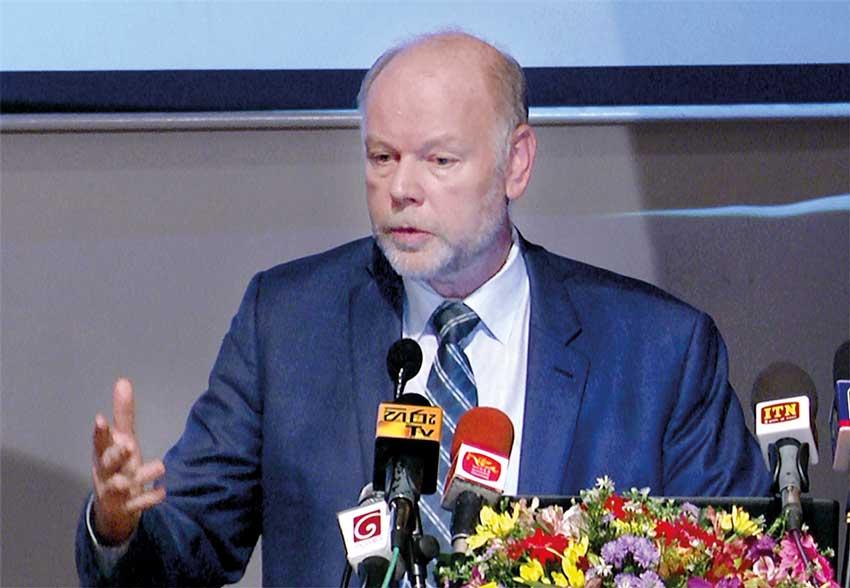28 Oct 2021 - {{hitsCtrl.values.hits}}

Hans Timmer
It is vital to support Sri Lanka’s services and informal sectors, which form the largest share of the economy, to recover from the pandemic-induced hardships, as they remain the hardest-hit from the once-in-a-century health crisis, according to a World Bank economist.
World Bank Chief Economist for South Asia Hans Timmer pointed out that the continuous battering experienced by the two segments have left deep scars and inequalities at different levels, which go beyond incomes and employment into areas such as gender and education, as women found it more difficult to find jobs while the children in less affluent communities were deprived of their education.
Speaking at a webinar organised by the Centre for Banking Studies of the Central Bank, Timmer called for adoption of digital technologies and policy reforms, enabling competition and access to markets and credit, as services and informal sectors offer the best potential in the post-pandemic era to drive productivity, generate skills and jobs and the much-needed export revenues.
The pandemic had a disproportionate impact on the informal sector firms and services sector, compared to large corporates, as the former has less resources to adjust to the new normal while the latter mostly required close proximity to the people, which was not possible due to the nature of the pandemic.
“It’s not only important to focus on the big companies in the formal sector that in the past were responsible for growth,” Timmer said.
“It is important to focus on the informal sector, which is very large also in Sri Lanka, to unleash new potential that it has because if you don’t unleash that potential, if you don’t integrate informal people into markets, give them access to credit and create opportunities to increase productivity, you will not achieve long-term growth,” he added.
Unlike in previous crises such as the global financial crisis unfolded in 2008/9, where exports and related manufacturing industries were affected the most, the pandemic inflicted the most damage on the services and firms engaged in the informal sector.
This not only made those who depended on these sectors destitute but also made them more vulnerable to the virus as social distancing was not really possible for them, perhaps due to the nature of the livelihoods they are engaged in and their less access to the healthcare facilities compared to the more affluent segments of society.
“What we are seeing in our surveys, specially girls in the rural areas, might drop out of schools altogether because after a year not having schools, there are not many incentives to go back to school,” Timmer said, highlighting the education gap amplified by the pandemic in South Asia.
The South Asian economic region contracted by 5.5 percent in 2020 while the Sri Lankan economy recorded a de-growth of 3.6 percent in the same year, logging the worst contractions on record.
According to Timmer, the region has more comparative advantage for services than for manufacturing for productivity growth, employment creation and generating export revenues.
He said South Asia had never been a manufacturing powerhouse compared to its neighbouring South East Asian economic block.
“The point that we are making in this report is that as part of that new normal is the significant importance in the services sector. The argument now is that the services-led growth is a possibility for Sri Lanka,” he said, citing the findings in their latest report titled ‘South Asia Economic Focus’.
“That’s partly because the trends (have) already been happening but they were specially accelerated during this crisis. People rely more on services, specially remote services,” he added.
However, he stressed the adoption of digital technology by the informal sector is crucial to achieve the desired results, as it has the potential to overcome many of the barriers faced by the informal sector prior to the pandemic.
“So, digital revolution is really a revolution. In my view, that creates opportunities for South Asia because it can unleash potential in the informal sector,” Timmer said, adding that the informal sector remains much larger in South Asia than in the other parts of the world, providing more than 80 percent of employment in the non-agriculture informal sector in most countries in the region.
24 Nov 2024 14 minute ago
24 Nov 2024 20 minute ago
24 Nov 2024 1 hours ago
24 Nov 2024 6 hours ago
24 Nov 2024 7 hours ago